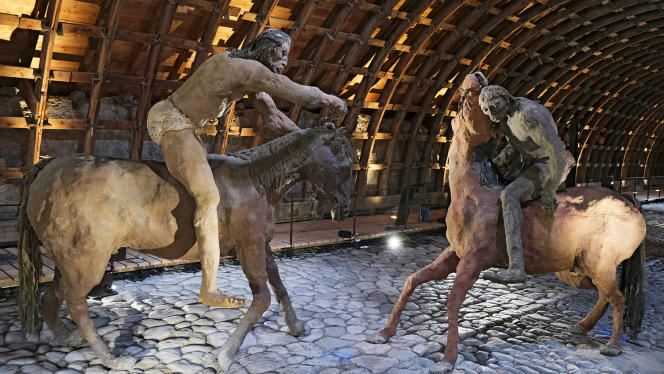Melee of muscular warriors, pileup of horses. You think you can hear the noises and the fury of the fight. Under the impressive curvilinear wooden frame of the old Rochambeau barracks, at the fort of Mont-Dauphin (Hautes-Alpes), the battle of Little Big Horn is replayed, opposing, in 1876, a coalition of Cheyennes, Sioux and Arapaho to the soldiers of General Custer’s regiment.
In thirty-five monumental sculptures, visible from July 6, the Senegalese sculptor Ousmane Sow (1935-2016) celebrates the brilliant victory of the fragile against the powerful. Posted in this fortified village for a period of ten years renewable by its widow, director Béatrice Soulé, this epic installation is well known to Parisians who discovered it amazed, one day in March 1999, on the Pont des Arts.
The exhibition has been remembered for its record attendance – at least 3 million visitors in three months. “An unexpected success”, remembers the art critic Emmanuel Daydé, then deputy mayor for cultural affairs. For the former physiotherapist born in Dakar in 1935, who later became an artist, it is consecration. But also, surprisingly, a swan song.
When Ousmane Sow gains international notoriety, the art world is turning its back on him. Although he is the first African artist recognized in France, none of his successors, to whom he had nevertheless paved the way, claims to.
The mayor’s daughter supports her cause
It all started well though. In 1993, the Senegalese sculptor, who two years earlier had been on the cover of Black review – quarterly which revealed a number of African talents – is invited to the great five-year exhibition of Documenta in Kassel, Germany. In 1995, he was at the Venice Biennale, which is to contemporary art what the Cannes Film Festival is to cinema. The autodidact dreams of an event in Paris.
Chance makes him cross paths with Hélène Tiberi, daughter of the mayor at the time, Jean Tiberi. Who supports his cause at the Town Hall. The location is perfect: it will be the Pont des Arts, between the Louvre and the Academy of Fine Arts. It will take a wealth of diplomacy to convince these two institutions, which did not look favorably on the proximity of the massive silhouettes imagined by an African artist.
The neighboring National School of Fine Arts, where the figurative is then taboo, is also pinching its nose. Money is lacking. The Havas group had first promised to contribute to the addition of 5 million francs (the equivalent of 1 million euros today), but its new CEO, Jean-Marie Messier, is evading. Béatrice Soulé moves heaven and earth, unearths sponsors and is personally indebted to the tune of 1 million francs.
You have 51.94% of this article to read. The rest is for subscribers only.
